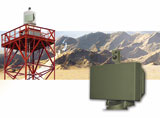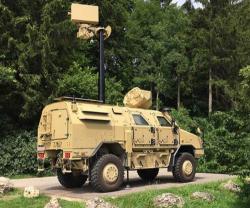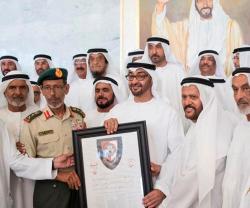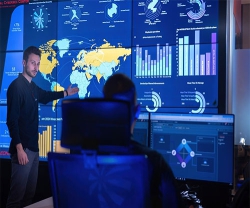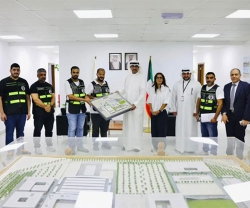Cassidian, the renamed defence and security division of EADS, recently introduced a new security radar which, by the use of new technologies, opens up completely new opportunities for the surveillance of border areas or sensitive industrial installations.
The radar which has been sold as part of a huge border protection system under the designation TRGS Sec (Tactical Radar Ground Surveillance, Security) forms the nucleus of a whole product family of security radars named SPEXER™.
Under the new serial name SPEXER™ 2000 the radar was shown for the first time during IDEX (Abu Dhabi, 20-24 February 2011).
The first batch of 40 radars has been delivered for integration in a huge border protection system; a military version has been delivered to the German Army.
"Our new radar has been so successful that we decided to create a complete product family covering all segments of security applications", explained Bernd Wenzler, CEO of Cassidian Electronics. "Therefore, we renamed the former TRGS Sec as SPEXER™ 2000 in order to demonstrate the technological coherence of this product family."
The new product family will consist of several derivatives of SPEXER™ 2000, each optimized for specific applications. In a first step, a version with maximum capabilities in smaller ranges, SPEXER™ 1500 together with a specific version for coastal surveillance, SPEXER™ 2000 Coastal, is expected to enter the market by end of this year. Other versions for the surveillance of critical infrastructure will follow.
SPEXER™ 2000 is the worldwide first security radar using the newest radar technology of Active Electronically Scanning Array (AESA). By electronic guidance of the radar beam this technology enables the sensor to fulfil several tasks at the same time while increasing the detection capability substantially. Therefore, one SPEXER™ 2000 can replace two or more conventional radars. The unique detection performance is based upon a multitude of Transmit- and Receive Modules produced by Cassidian.
For more information, check Al-Defaiya Issue # 2/2011

